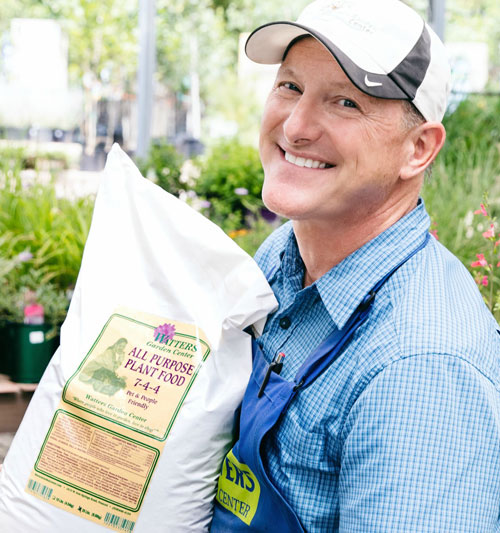2/1/2021
The Profitability Puzzle
Ann-Marie Vazzano

A lot of garden centers are good at many things: breathtaking holiday displays; enticing gift merchandising that makes shoppers “ooh” and “ahh” (and maybe even impulse buy); and, of course, selling plants. But just because you can do lots of things, and do them well, doesn’t always mean you should.
When it comes to profitability, a laser-focused approach often can be the best bet. At least that’s what Ken Lain, owner of Watters Garden Center in Prescott, Arizona, has found.
“We only have one buying criteria,” Ken explains. “Is it a plant or does it help make a plant grow?”
This philosophy has led to lots of changes at Watters Garden Center over the years, resulting in eliminating categories that aren’t top sellers. Instead, Watters has fine-tuned its product categories based on profitability, focusing on the items that drive the greatest profits. In Watters’ case, those categories include vegetables, perennials, bagged soils, hardgoods, annuals, shrubs and trees (in that order).
“We run a POS report that highlights our most-profitable items and we give more space to the top 10 items in each category,” Ken says. “We do the same with the least-profitable items and delete them from our offerings.”
The garden center also keeps an eye on which vendors bring the highest profits, giving the biggest money-makers more orders while cutting the least-profitable vendors.
Focused on Numbers
Smart buying isn’t the only piece of the profitability puzzle, though. Ken also pays close attention to the three numbers he says can make the most significant difference to a garden center’s bottom line: inventory quantities, attained margin and labor cost. He checks each of these budgets weekly, advising buyers to ensure they’re stocking the right number of products at the right time. He also monitors each department’s attained margin, adjusting pricing accordingly to prevent having too much inventory in relation to sales.
Labor costs are also watched closely, particularly when the spring season begins and wind downs.
“Our goal is to onboard staff quickly before the season starts and equally quickly reduce staff after Memorial Day when the season drops so abruptly,” Ken says.
Pre-pricing plants before they arrive is another way the garden center reduces labor costs and increases profits. When plants don’t need to be priced at the back dock, inventory turns increase, too, because the plants can be merchandised right away.
Making the Most of Marketing
Keeping a close eye on the numbers is key to sustained profitability, but marketing is important, too. Content marketing, in particular, is Watters’ bread and butter. Ken writes a weekly garden column for the store’s e-newsletter and blog, and seven newspapers run the column each week, reaching an even larger audience. In addition, Ken uses his columns as an outline for a radio show broadcast on several terrestrial and digital radio stations.
“The radio show is pre-recorded as live segments from my office and sent to the radio stations, then stitched together to create The Mountain Gardener Podcast,” Ken explains.
But it doesn’t end there. The columns’ content is also used to teach the store’s garden classes, which are held Saturday mornings on location and livestreamed on the Watters Garden Center Facebook page.
“The idea is to create the work once and use it across all media messaging—content marketing to its core,” Ken says.
He compares retail to a three-legged stool, with inventory, merchandising and advertising representing the three legs.
“Get all three of these right and sales go up. Get one wrong and it flops over,” he says.
About This Series
In 2021, we’ll feature a different garden retailer each month from The Garden Center Group’s Best Practices group. These retailers achieved 10% or more profit in the previous year (the first couple of features are from the 2019 Best Practices Group). The Garden Center Group offers Weekly Department Reviews, as well as an Annual P&L Study for those clients who wish to participate. Both are actionable reports that retailers can use to benchmark off of and grow sales in specific categories. Find out more at www.thegardencentergroup.com.